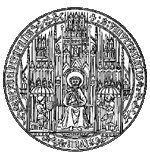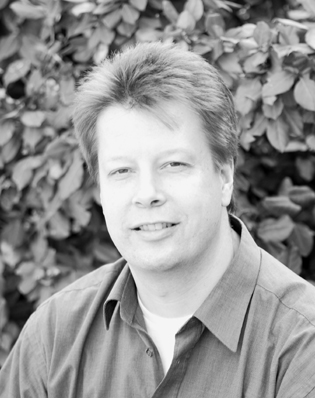
| |
Walter Nickel
Heidelberg University Biochemistry Center
- 1994 Graduation (PhD), University of Göttingen, Germany
- 1994-1997 Post-doctoral research fellow
Institute for Biochemistry I, Heidelberg University, Germany
1997-2000 Post-doctoral research fellow
Memorial Sloan-Kettering Cancer Center, New York, U.S.A.- 2001 venia legendi in Biochemistry, Heidelberg University, Germany
- 2001-Group Leader at Heidelberg University Biochemistry Center, Germany
Non-classical Mechanisms of Eukaryotic Protein Secretion
Proteins destined for the classical pathway of secretion (e.g. serum proteins such as immunoglobulins) typically contain an N-terminal signal peptide that mediates translocation into the lumen of the endoplasmic reticulum followed by ER/Golgi-dependent transport to the cell surface. By contrast, a growing number of proteins such as angiogenic growth factors (Fibroblast Growth Factor (FGF) 1 and 2), lectins of the extracellular matrix (family of the galectins), infection-related cell surface markers of Leishmania parasites (HASP family), inflammatory cytokines such as interleukin 1b as well as viral proteins such as Herpes simplex tegument protein VP22 lack a signal peptide yet they are secreted from eukaryotic cells. Consistently, these secretory proteins do not localize to classical secretory organelles such as the endoplasmic reticulum and the Golgi apparatus and have been shown not to contain ER/Golgi-specific posttranslational modifications such as glycosylation. Importantly, inhibitors of the classical secretory pathway such as brefeldin A do not interfere with secretion of these proteins. Thus, unconventional mechanisms of protein secretion have been postulated, however, the machineries that mediate these processes remain to be identified in molecular terms.
Based on both in vivo and in vitro systems functionally reconstituting the transport processes described we are currently analyzing the molecular components that mediate export of FGF-2, galectin-1 and HASPB. Moreover, we make use of these systems in order to identify small molecular weight molecules that interfere with unconventional protein secretion pathways. Such molecules have great potential to serve as lead compounds for the development of for example anti-angiogenic drugs.
click to enlarge
Selected Publications
T. Schäfer, H. Zentgraf, C. Zehe, B. Brügger, J. Bernhagen, and W. Nickel (2004) Unconventional Protein Secretion: Direct Translocation of Fibroblast Growth Factor 2 Across the Plasma Membrane of Mammalian Cells. J. Biol. Chem., in press
R. Backhaus, C. Zehe, S. Wegehingel, A. Kehlenbach, B. Schwappach, and W. Nickel (2004) Unconventional Protein Secretion: Membrane Translocation of FGF-2 Does Not Require Protein Unfolding. J. Cell Sci., in press
O. Flieger, A. Engling, R. Bucala, H. Lue, W. Nickel, and J. Bernhagen (2003) Regulated secretion of macrophage migration inhibitory factor is mediated by a nonclassical pathway involving an ABC transporter. FEBS Lett. 551:78-86
W. Nickel (2003) The Mystery of Non-classical Protein Secretion: A Current View on Cargo Proteins and Po-tential Export Routes. Eur. J. Biochem. 270:2109-2119
C. Seelenmeyer, S. Wegehingel, J. Lechner, and W. Nickel (2003) The tumor antigen CA125 represents a novel counter receptor for galectin-1.
J. Cell Sci. 116:1305-1318A. Engling, R. Backhaus, C. Stegmayer, C. Zehe, C. Seelenmeyer, A. Kehlenbach, B. Schwappach, S. Wegehingel, and W. Nickel (2002) Biosynthetic FGF-2 is Targeted to Non-Lipid Raft Microdomains Following Translocation to the Extracellular Surface of CHO cells. J. Cell Sci. 115:3619-3631
Contact:
PD Dr. Walter Nickel
Biochemie-Zentrum Heidelberg,
Im Neuenheimer Feld 328
D-69120 Heidelberg, Germany
phone +49-6221-54 54 25 (office), -54 54 27 (lab)
fax +49-6221-54 43 66
email: walter.nickel@urz.uni-heidelberg.de
